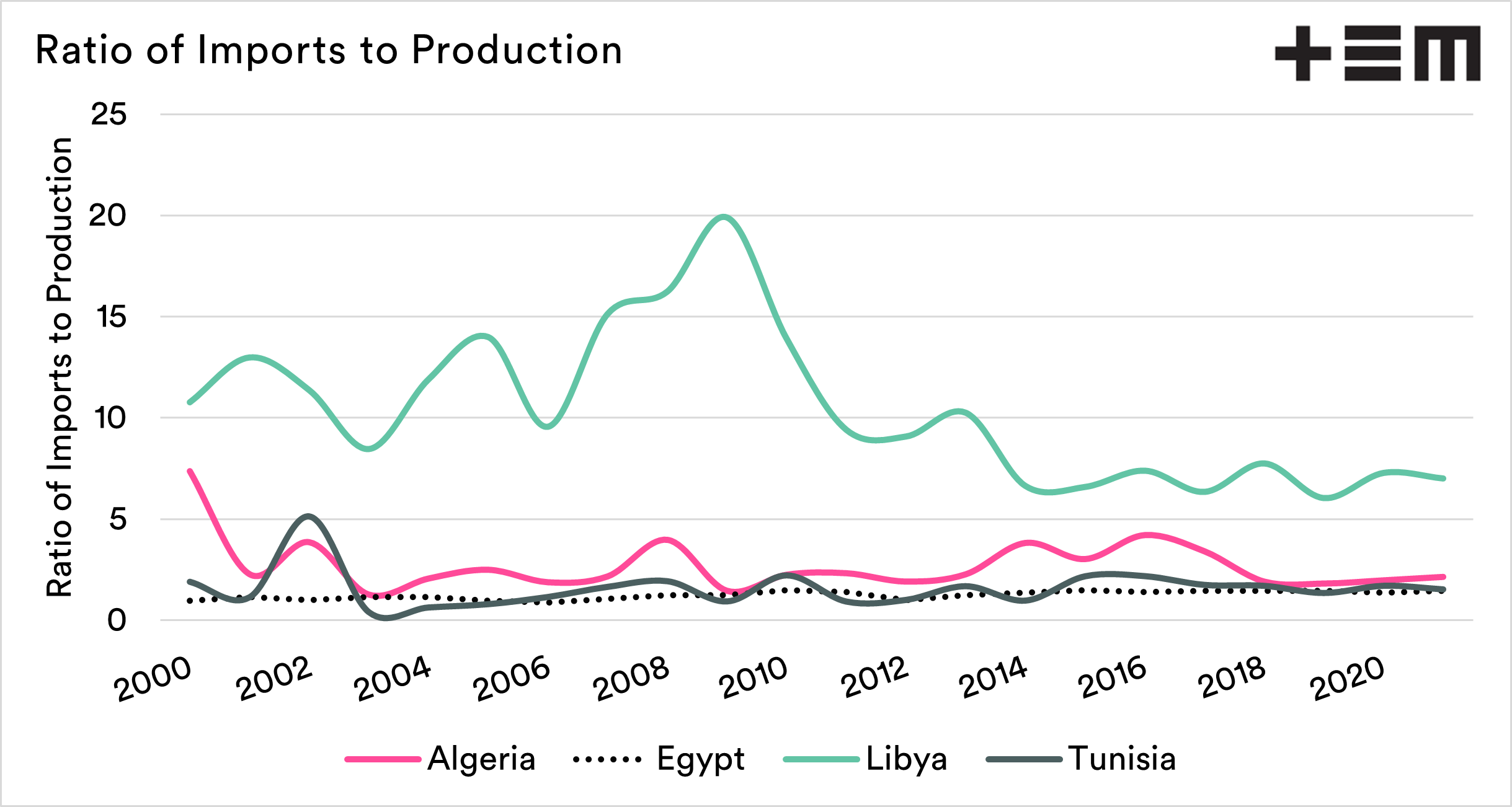The Hunger Grains – Invasion will impact more than Ukraine.

The Snapshot
- The invasion of Ukraine has an immediate effect on the people of Ukraine.
- In the longer term, the conflict has the potential to cause higher wheat and, therefore food prices.
- Higher food prices can lead to political instability (food riots etc).
- North African and Middle east nations used to Russian supplies will have to look elsewhere.
- The longer the invasion, the larger the impact.
The Detail
The immediate concern for the world is the situation on the ground in Ukraine, where unknown numbers of people are being injured and killed. The impact of the conflict will be felt wider and further afield than within the borders of Ukraine. The world’s poorest will feel the effects.
Russia and Ukraine provide the majority of the wheat headed for the middle east and northern Africa. The chart below shows the monthly Egyptian imports of wheat since the start of 2020. On average, during this period >80% of imports have come from Ukraine/Russia.
The average monthly imports into Egypt are just shy of 1mmt; at the moment there is next to no wheat heading from the black sea. Exporters who had contracts from black sea ports can enact their Force Majeure clauses.
This is a major concern for a country like Egypt. They have been the largest importer of wheat for a long time. Egypt has been a big buyer due to the diet supported by heavily subsidised bread. The majority of the country is able to buy bread at subsidised rates.
The country also has an insufficient production capacity to meet the requirements of 100million people.
The genesis of the Arab spring is believed to be the bread riots which grew into a larger uprising. These riots were caused by rapidly increasing bread prices, caused by higher overall global wheat pricing. This is clearly a concern for Egypt as prices rise to levels that could start becoming unaffordable.
The first chart below shows a comparison of the FAO food price index along with the number of major food riots around the world. The second chart displays the number of riots, though this time against the deviation from the average FAO food price for the period. As we can see, there is a tendency for more food riots when food prices deviate from the average to be a larger prevalence of riots.
I have focused on Egypt, as they are an obvious country. They have a huge population, heavily reliant on bread. They are not the only country in that region facing issues.
I have selected four countries in northern Africa. These are Algeria, Egypt, Libya and Tunisia. These countries are all that I would consider being food insecure (although there are others). The chart below shows how many tonnes they import for every tonne produced domestically.
The summary of 2000 to present:
- Algeria – 2.7mt
- Egypt – 1.2mt
- Libya – 10.3mt
- Tunisia – 1.5mt
These countries cannot just switch on production. They don’t have the capacity; they are reliant on imports. If in the worst-case scenario, the conflict in Ukraine continues for months rather than weeks, we could see a severe reduction in globally available wheat, this will see prices rise.
These countries may end up having to pay big prices in order to get the grain they require to keep their populations happy.
The immediate concern is the next couple of months while the conflict constrains logistics. The world’s major consumers will likely switch to alternate origins temporarily. At present, that is an expensive proposition.
As we end the current marketing year, available and accessible stocks are relatively low ahead of harvest. Import nations will look to the northern hemisphere harvest with even keener eyes than normal.
If there are any issues things could get crazy.










